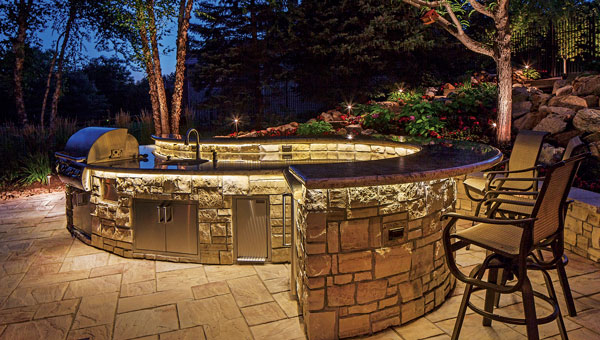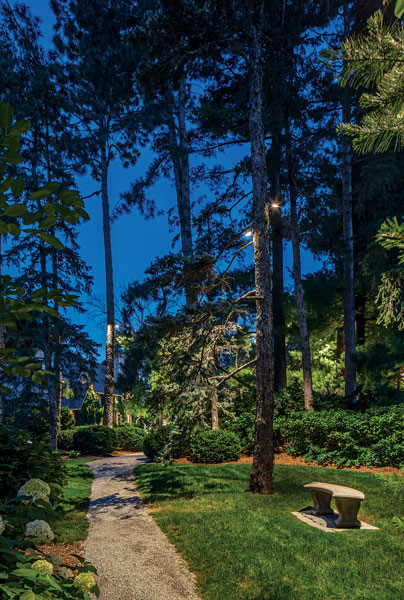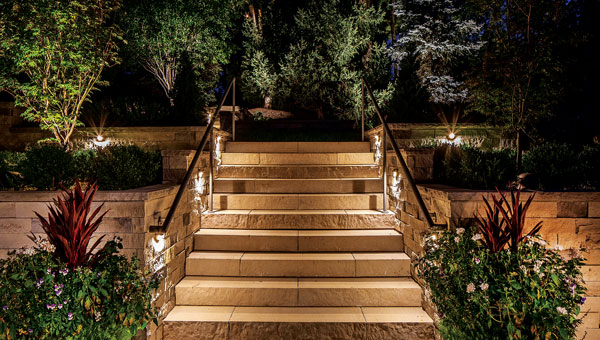You just put in all this work with maintenance or installations to make a client’s property look perfect. So, why limit its visibility to only half the day?
When the sun goes down, landscape lighting can make a big project shine in a whole new light — literally. Jerry McKay, owner and founder of McKay Landscape Lighting and the Lighting Summit, says correctly illuminating a property is often neglected, and with more than 30 years in the industry, he has some advice to take your projects to the next level.
“I’ve heard it a thousand times, but you can’t see the landscape at night, and you can’t see the architectural features of your home at night,” McKay says. “(Lighting is) the age-old safety, security and beauty. But creating that beauty for families and creating some safety, and then enhancing their security — all done tastefully — can be pretty powerful.”

McKay says many people often fall victim to overused light features that don’t work well for their project, such as excessive path lighting and uplighting on trees. Instead, he suggests starting simple and just looking at the landscape to see what looks bad or needs some work.
“I was at a job this morning that had one little tree and had four uplights on it. It made no sense,” Mckay says. “I think what happens is people just see stuff and they think that’s the way it should be, and so they really have to think out of the box.”
For McKay, there’s a few design choices he finds are being used more often by his company, such as LED tape underneath outdoor kitchens and bars, architectural sconce lights, downlighting on large trees for a more natural aesthetic and architectural bollards that match the property’s design.
“The use of bollards in certain instances, I would say it’s more like jewelry for the house. It just makes it look that much better,” McKay says.

One big difference between landscape lighting and other typical jobs is that the magic happens in the dark. Needing to work long days and evenings to see your product glow into the night can sometimes be a difficult grind, but McKay says going that extra mile can make it all worth it.
“To be able to mix a little bit of art with business, it still has some pizzazz as kind of a cool business,” McKay says. “And so that’s kind of the fun part of it.”


